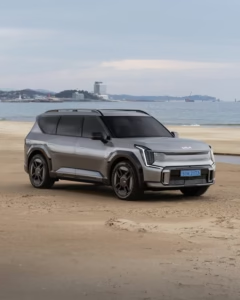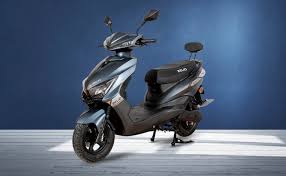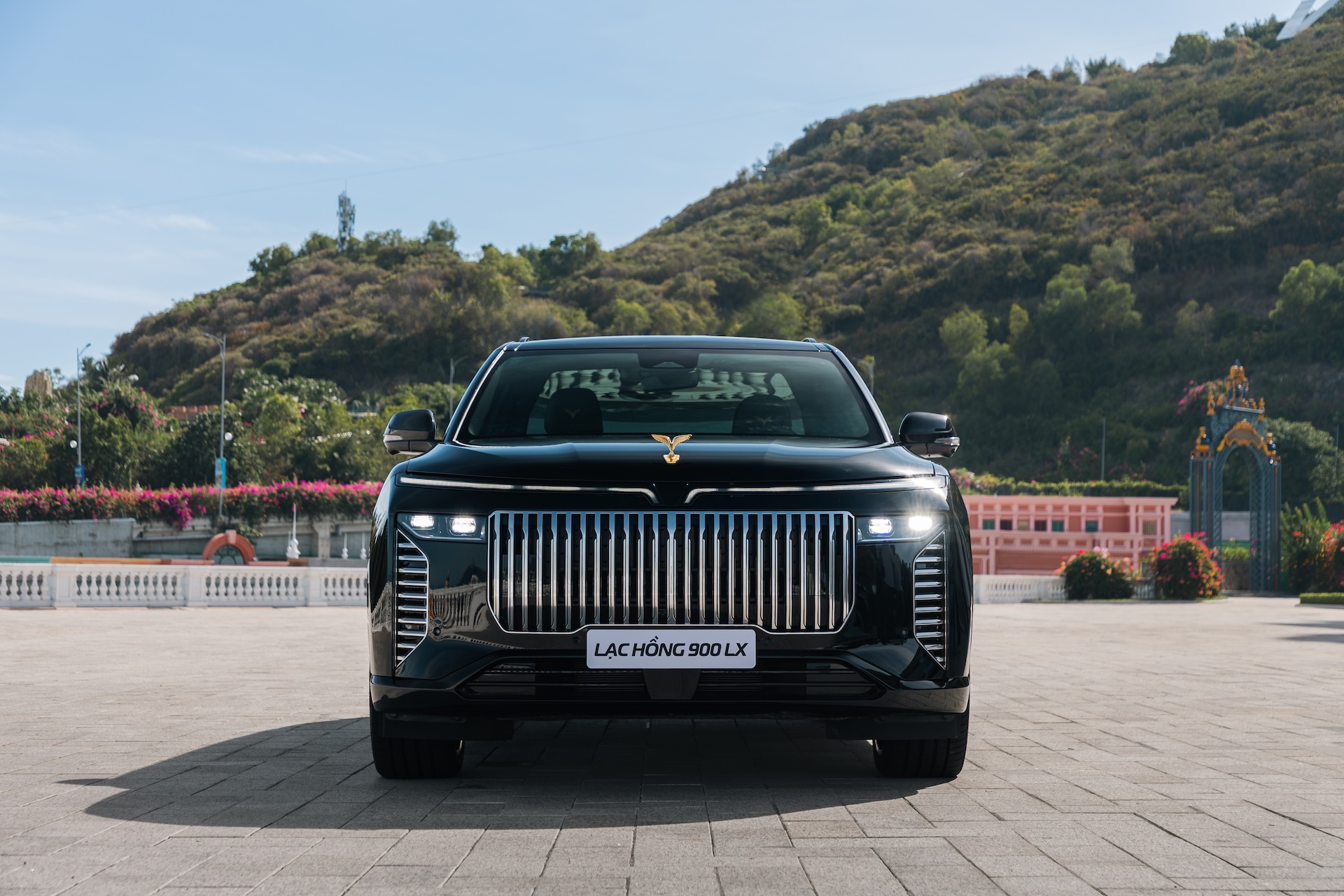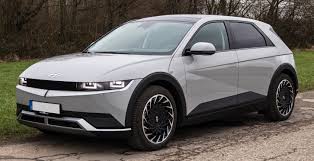Introduction
As you all know, India’s auto leader, Tata future EV plan to emerge as the EV market leader rapidly. With a well-rounded strategy geared towards aligning itself with global sustainability goals and India’s journey towards cleaner mobility. Do you want a budget-friendly SUV, but are unaware of an authentic source to get the correct information? Let me guide you through it.
The company has already succeeded with its first crop of EVS, including the Nexon EV, Tiago EV, and Tigor EV, which have given it a massive market share in the Indian EV scene.
But it’s just a beginning. Now, Tata Motors is starting a new electric journey, a journey to shape India’s future of e-mobility with the best-in-class electric vehicles, which combine modern design with technology that is significant and is sure to change how people drive and travel. Two standout models are the Harrier EV and Sierra EV, which are leading the way. These are not just electric versions of their fossil fuel-powered vehicle; they represent a revolutionised shift from the tried-and-tested space for Tata, featuring EVS built from the ground up, with ultra-modern platforms and design philosophies that are futuristic and forward-looking.
As overseas and domestic car manufacturers compete to corner the growing EV market in India, Tata’s enterprising growth bids aim to consolidate the back-start lead. The Harrier EV and Sierra EV are the first signs that the company is stepping beyond compact EV sizes and into mid-size and luxury SUVS. This area is going to be crucial for sustained growth and leadership in the long term.
This narrative traces Tata’s evolving electric strategy, the specific tech and design updates under the hood of the Harrier EV and Sierra EV, and what their arrival suggests for India’s sustainable mobility journey.

Tata Motors’ Electric Vehicle plans and roadmap.
Tata Motors has outlined an ambitious and straightforward strategy to become the leader in India’s rapidly expanding electric vehicle (EV) market. The company is strategically investing across the entire EV value chain and co-developing an electric vehicle architecture while focusing on rapid adoption and development of the EV ecosystem. The company is also introducing cars using the Gen 2 Act from its original EV platform, which is in development on its ICE platforms. With improved battery packaging, more excellent range, and futuristic technologies such as vehicle-to-load (V2L), vehicle-to-vehicle (V2V) charging, and advanced driver-assistance systems (ADAS), the new platform offers significant advancements.
Tata is investing heavily in local battery manufacturing at Tata Green Batteries to support this growing range of EVS. It has formed a joint venture with the Tata Group’s subsidiary, Agratas Energy Storage Solutions, to set up a gigafactory worth $1.5 billion in Gujarat. Starting production by 2026, the new factory will deepen Tata’s cut in its import dependence and strengthen its hold on battery supply chains, a significant enabler for cost and scalability.
And another plank in Tata’s is infrastructure. The group is exponentially scaling up the Shaking Network through its arm, Tata Power. Tata plans to expand the network from today’s 10,000 public and semi-public chargers to 100,000 charging points by the end of the 2030 financial year. It will also increase the number of EV-only showrooms from 2 to 50 shortly, providing EV shoppers with a more focused and educated shopping experience.
Tata’s ecosystem play is also noteworthy. The company and its electric vehicle (EV) arm, Tata Passenger Electric Mobility (TPEM), are collaborating with other Tata Group companies like Tata Chemicals, Tata Elxsi, and Tata Power to create a domestically manufactured, vertically integrated EV ecosystem. This collaboration gives Tata an advantage in terms of cost and supply chain aspects while also enhancing Tata’s market position in the EV market in India.
All these efforts combined are a well-coordinated, long-sighted approach that still paints Tata Motors not just as a carmaker reacting to the EV wave but as a pioneer shaping the future and defining the idea of an accessible and sustainable motorised India.
Harrier EV: First EV For Tata’s SUVS?
- The new Harrier EV is very similar to the internal combustion engine that is already running on the road, which will make you adopt the EV Harrier quickly because telling difference between them might be difficult, Yes, some of the changes has been made that comes under madatory changes so that Harrier doesn’t lack in any criteria.
- Tata Harrier has alloy wheels that are aerodynamically optimised. You might not know what aero-optimised is, let’s get to know together: aero-optimised alloy wheels are specially designed to reduce air resistance as the vehicle moves, improving efficiency. Unlike traditional alloy wheels that focus primarily on aesthetics and essential strength, these wheels feature a more streamlined design that allows airflow to flow more smoothly around them. This enhances the vehicle’s range by reducing drag and contributes to a quieter, more stable ride at higher speeds. It has a 12-inch touchscreen.
- Harrier cabin has vibrant lighting strips.
- Harrier EV has a level of advanced driver assistance systems, which means it has autonomous driving technology that includes: blind spot monitoring, emergency braking, lane assistance,
- It has seven airbags, which is rare, but for safety purposes, it is more than enough to satisfy an EV Harrier buyer.
- Harrier EV has a range up to 500 km on a single charge.
- A 360-degree camera to assist the driver while parking.
Sierra EV: Bringing a Legend Back in the Form of Modern Technology
- The Tata Sierra will soon be introduced with three powertrain options: petrol, diesel, and electric. The Tata future EV electric version will have multiple battery packs and a front-wheel drive setup. The EV will likely offer a 4-seat lounge configuration, featuring an ottoman function for the rear seats. The Sierra has retained several design cues from its concept version.
- It will be constructed on Tata’s Gen 2 acti. EV platform, which has the same modular architecture as the Harrier EV but with improved safety, packaging efficiency, and provision for advanced electric drivetrain systems.
- The spruced-up model is expected to be launched in the second half of 2025 with ICE and EV counterparts on the line-up, but the other way around this time, with the EV model leading the pack, it will be the high-end model. Inspired by the 1990s Sierra, the EV model keeps its short overhangs, long bonnets, and wraparound rear-side glass, carried over as modern LED lights, flush doors, and a coupe-like appearance.
- It will likely feature a dual-motor setup for all-wheel-drive capability, boasting a range of more than 500 km on a single charge, making it suitable for long hauls and lifestyle-oriented buyers.
- There will also be a four-seater, new bench, captain seats, enhanced legroom, and cosy seat upholstery for a nobler, “lounge-like ambience” on the inside.
- Dual digital displays, a panoramic sunroof, connected car tech, OTA updates, voice command, and a comprehensive ADAS suite for added safety will likely be among the upcoming features.
- The Sierra EV, meanwhile, will be compatible with V2L and V2V charging technology, further establishing it as the lifestyle utility vehicle for today’s adventurers.
Conclusion
Tata Motors Tata future EV is set to further extend its dominance in the Indian electric vehicle market with the soon-to-arrive Harrier EV and Sierra EV. The vehicles mark a shift toward premium and future-ready mobility solutions, and for that, they have an impressive roadmap, a massive investment in infrastructure, and a focus on localism. Tata is placing itself on the right path so that electric mobility will become the norm in India.





